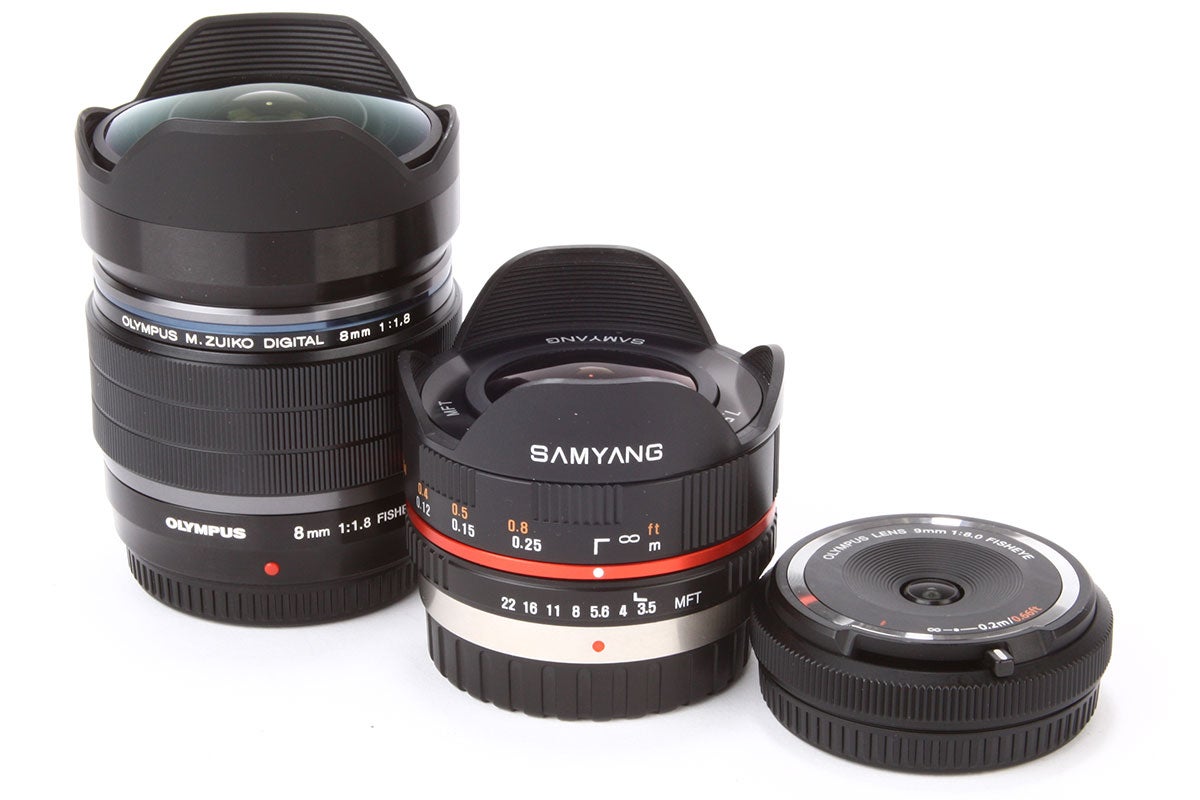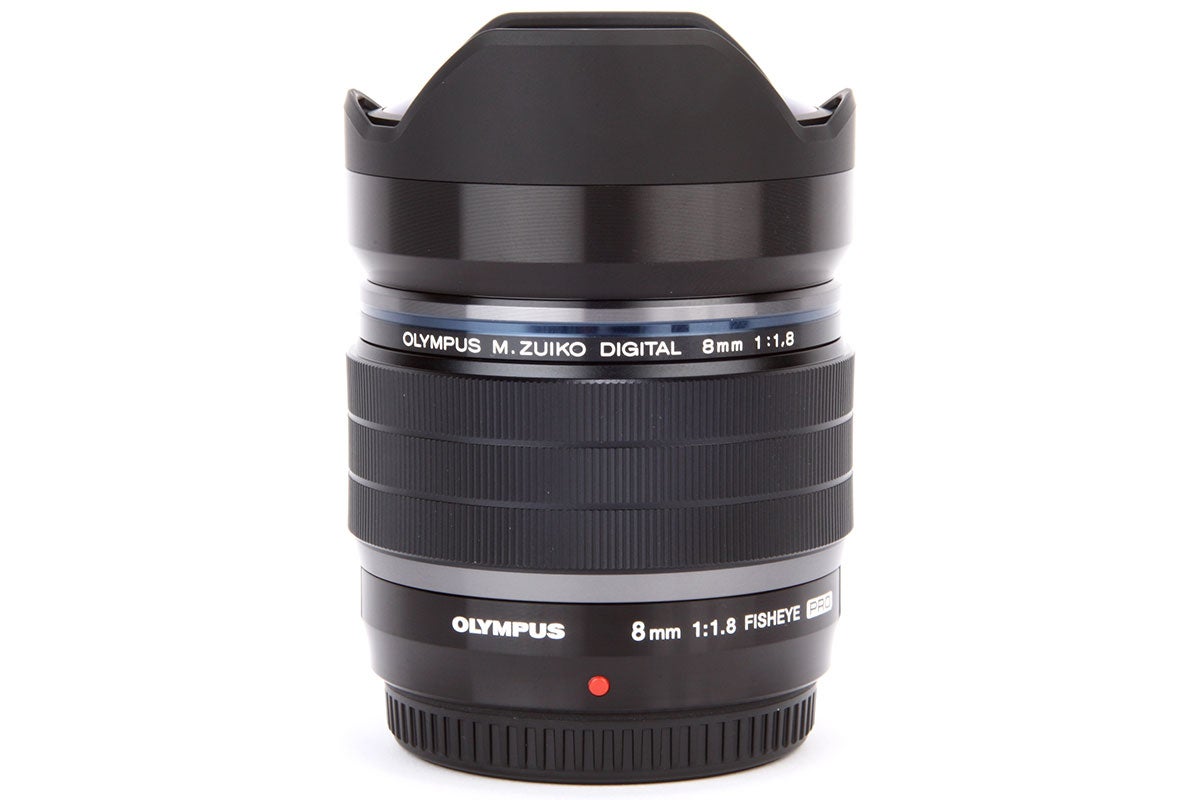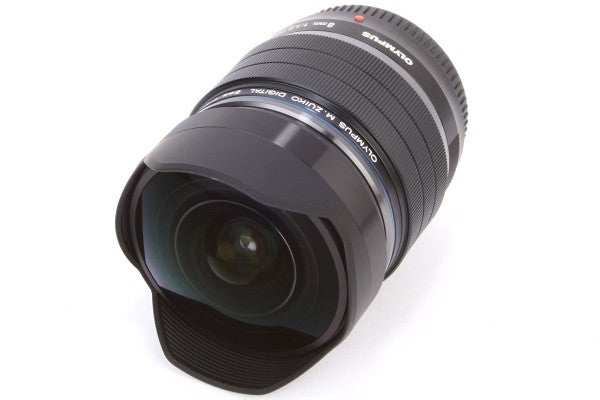Olympus bills the M.Zuiko Digital ED 8mm Fisheye 1:1.8 PRO as the brightest lens of its type. Andy Westlake investigates whether it lives up to its Pro tag.
Olympus M.Zuiko Digital ED 8mm Fisheye 1:1.8 PRO Review
Olympus M.Zuiko Digital ED 8mm Fisheye 1:1.8 PRO Review – Introduction
Launched alongside the 7-14mm f/2.8 wideangle zoom, the 8mm f/1.8 fisheye brings Olympus’s top-end PRO line of Micro Four Thirds lenses to four. Being a fisheye, unlike the 7-14mm it uses a non-rectilinear projection, rendering straight lines in the subject as curved in the final image. This allows it to offer a much wider angle of view – fully 180° across the diagonal. With a maximum aperture of f/1.8, it’s the brightest fisheye lens on the market. It will be available from June 2015 for £799.99.
The Micro Four Thirds system isn’t exactly lacking in fisheye options already. There are two ‘proper’ fisheyes offering 180° views, namely the Panasonic Lumix G Fisheye 8mm f/2.8 which includes autofocus and electronic aperture operation for £535, and the Samyang 7.5mm f/3.5 UMC Fisheye MFT with manual focusing and aperture control for £315. In addition, Olympus offers the 9mm f/8 Body Cap Lens for just £89, although it only gives a 140° view, and both Olympus and Panasonic make fisheye converters compatible with some of their kit zooms. So you might be forgiven for asking where this one fits in.
The key is that this is lens is a member of Olympus’s PRO series, which means it features solid, splashproof construction and premium optics to go with its fast aperture. We’ve been hugely impressed by Olympus’s existing PRO lenses, the 12-40mm f/2.8 and 40-150mm f/2.8, so let’s see whether the 8mm f/1.8 Fisheye matches up.
Build and handling

The Olympus 8mm f/1.8 alongside the Samyang 7.5mm f/3.5 and the Olympus 9mm f/8 Body Cap Lens
Measuring 80mm long and 62mm in diameter and tipping the scales at 315g, the 8mm is considerably longer and heavier than either the Panasonic 8mm f/2.8 or the Samyang 7.5mm f/3.5. However it’s still the smallest lens in the Olympus PRO range.
Build quality is everything we’ve come to expect in this PRO line. The barrel is predominantly metal-skinned, including the large manual focus ring. There’s a rubber seal around the lens mount to help keep out water and dust, and the integrated lens hood is made of thick, rigid black plastic. The lens is supplied with a chunky cap that clips on over the hood. As with all fisheyes, there’s no way to mount a filter on the front; unlike some, there’s no way to use a rear-mounted gel filter either.
Focusing

The manual focus ring doesn’t use the same push-pull design as Olympus’s other PRO lenses
The 8mm f/1.8 uses a stepper motor for autofocus, which is silent and extremely quick. As usual with Micro Four Thirds, AF accuracy is exemplary, but I did find the lens had a tendency to hunt more than usual with close-up subjects.
Unlike Olympus’s other PRO lenses the focus ring doesn’t have a push-pull design to engage manual focus, and has no distance scale either. Instead it’s of a more conventional, freely rotating focus-by-wire type. It still works pretty well, but manual focus doesn’t have the same direct feel as the other PRO lenses. There’s no L-Fn button on this design, which may be an issue if that’s something you use often.





